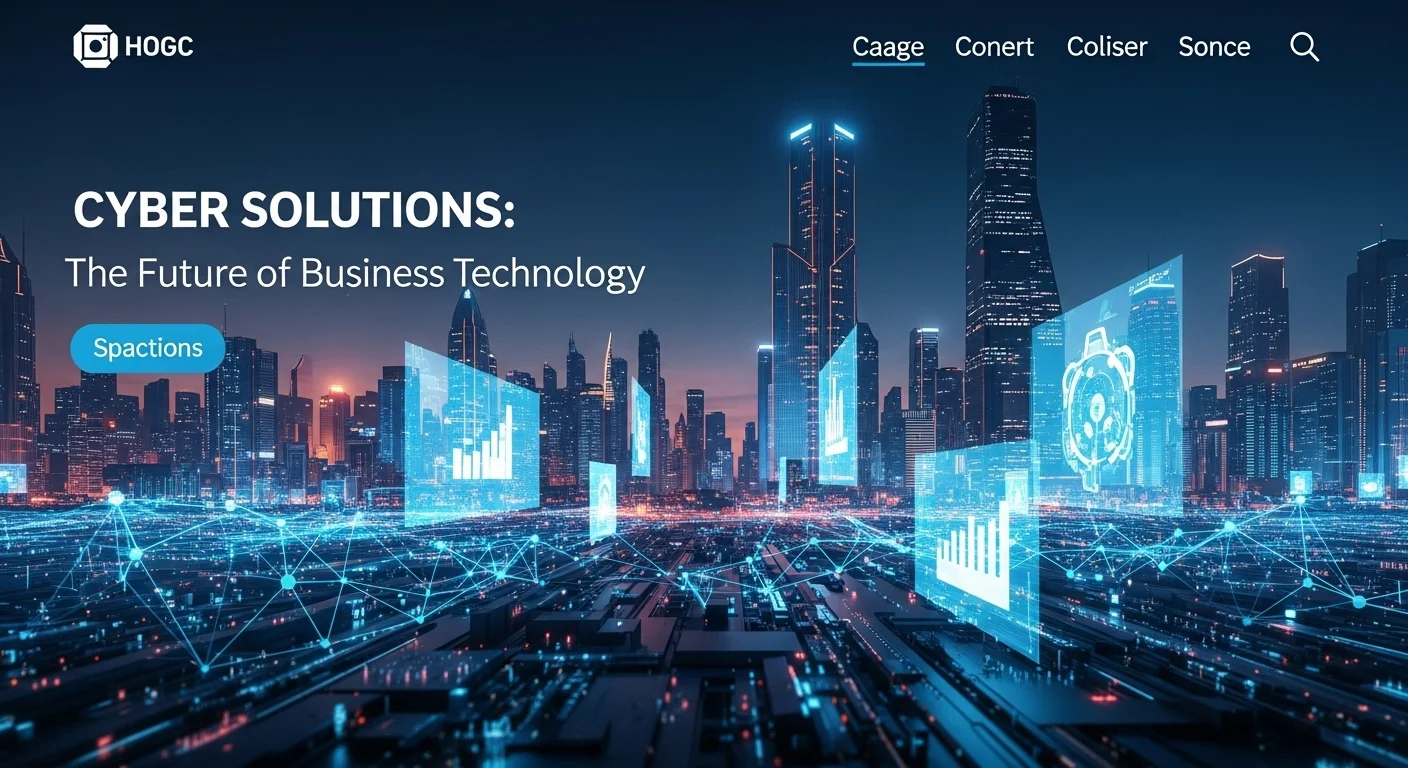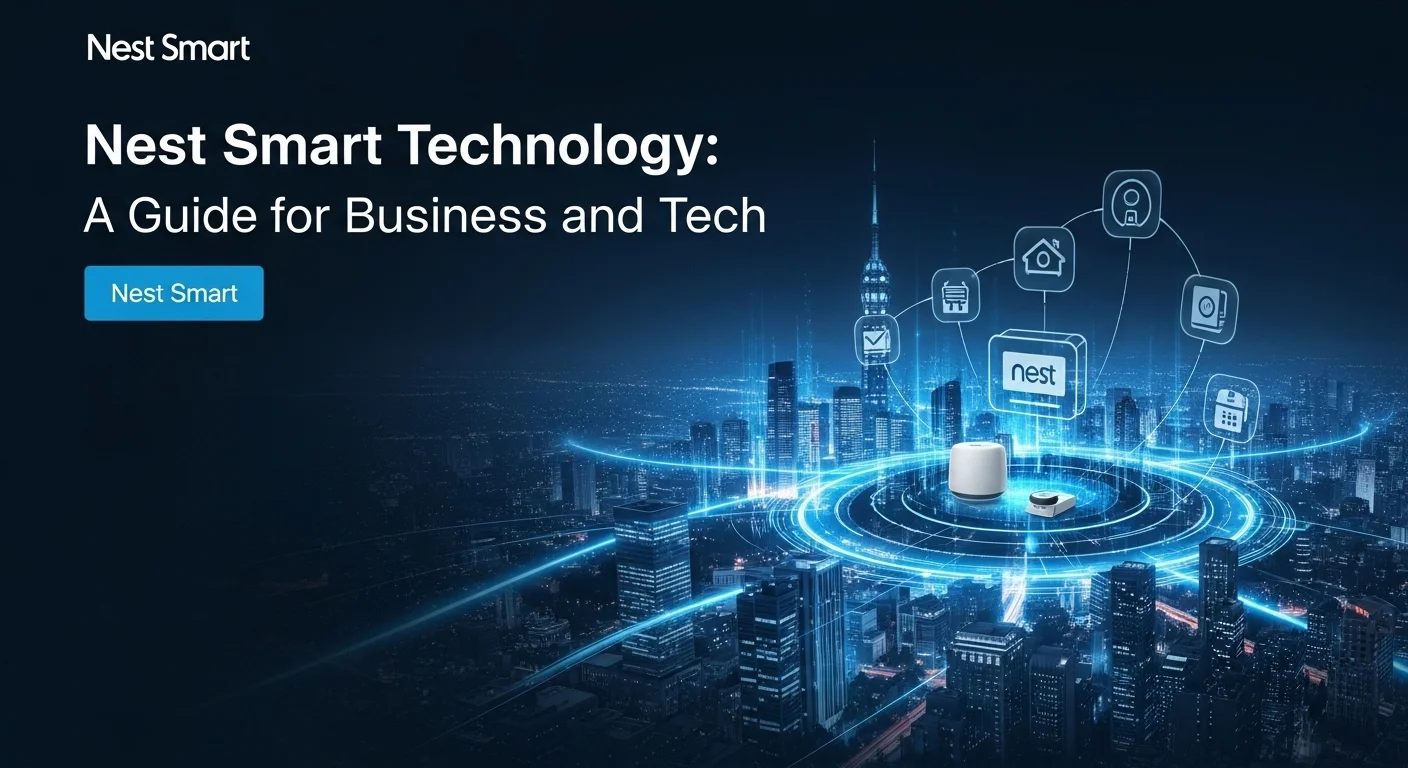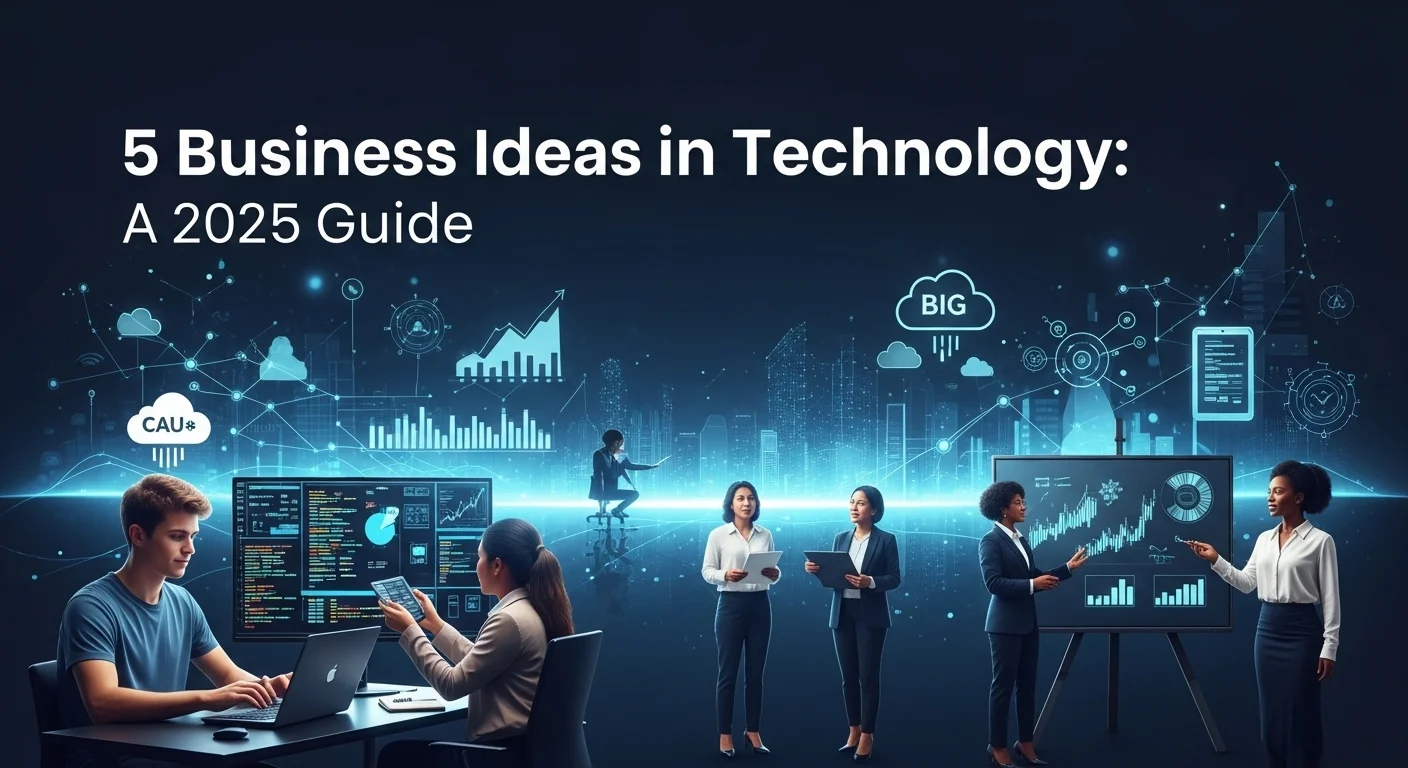Your Practical Guide to Cyber Solutions: Protecting Your Business in the Digital Age

Executive Summary
In my twenty years in cybersecurity, I've seen one thing consistently: technology moves at lightning speed, but the need to protect our digital assets remains constant. The term 'Cyber Solutions' sounds complex, but at its heart, it's simply about using the right tools and strategies to keep your information safe. This guide is my attempt to cut through the jargon and give you a straightforward, human look at what that means. We'll walk through what these solutions are, why a local coffee shop and a global bank need different kinds of protection, and how you can build a defensive strategy that actually works. Think of me as your personal guide to navigating the digital world securely, so you can focus on what you do best: growing your business.
Table of Contents
What You'll Learn in This Guide
What Are Cyber Solutions, Really? An Expert's View
When I first started in this field, cybersecurity was a niche topic for IT departments. Today, it’s a boardroom conversation, and for good reason. At its core, 'Cyber Solutions' is the complete toolkit—the technologies, the plans, the human expertise—we use to protect our digital lives from harm. It's not just about installing antivirus software anymore. It's about creating a smart, layered defense system that protects everything from your personal data to critical national infrastructure.
Technology, as we know, is a double-edged sword. It drives incredible progress, but every new connection creates a new potential doorway for those with bad intentions. This is why having a solid security strategy is non-negotiable. It's the foundation that allows us to trust the digital systems that run our world. Without it, everything from our banking systems to our power grids would be vulnerable.
The threats we face today are more sophisticated than ever. We're not just dealing with lone hackers; we're up against organized criminal syndicates and state-sponsored groups using advanced tools. They can deploy ransomware that shuts down a hospital or use AI to craft phishing emails that are nearly impossible to spot. To fight back, we need to understand that security isn't one-size-fits-all. A security plan for a small business, for example, is tailored to protect customer data and financial records on a budget, often relying on managed services that provide expert protection without the need for a large in-house team. They need effective, affordable security that lets them focus on their customers.
On the other hand, a large multinational corporation has a much more complex challenge. They have a massive digital footprint, spanning data centers and cloud services across the globe. Their security solutions need to be incredibly scalable and sophisticated, often involving a dedicated 24/7 Security Operations Center (SOC) to hunt for threats in real-time. For them, a security breach isn't just an IT problem; it's a potential catastrophe that could cost billions and shatter customer trust.
Then there's the unique world of government cybersecurity. Government agencies protect our nation's most sensitive secrets and ensure critical services like power and water keep running. The threats they face are often from other nations aiming to steal intelligence or cause disruption. As you can imagine, the security solutions here are built to the highest, most rigorous standards, with a heavy emphasis on resilience and information sharing to defend against the most advanced adversaries.
Two key areas make all of this possible: the IT and intelligence sides of cyber. The IT solutions are the hands-on work—configuring the firewalls, updating the systems, and making sure all the security tools work together. It's the essential, operational backbone of defense. Cyber intelligence, on the other hand, is our forward-looking eye. It involves gathering information on emerging threats, understanding how hackers operate, and using that knowledge to predict and prevent attacks before they happen. It's the difference between reacting to a break-in and spotting the burglars casing the neighborhood. When you combine all these elements, you get a mature cyber strategy that's essential for any modern organization to not just survive, but thrive.

The Building Blocks of a Strong Cyber Defense: A Complete Guide
Building a strong security posture is a lot like building a fortress. You don't just build one big wall; you create multiple layers of defense. If one layer is breached, another is waiting right behind it. This guide will walk you through the essential components of a modern, multi-layered cybersecurity strategy that integrates people, processes, and technology.
Core Technologies: Your Digital Defenses
These are the tools that form the foundation of your security program, working to prevent, detect, and respond to threats.
1. Network Security: This is your perimeter defense, the first line that protects your digital borders.
- Next-Generation Firewalls (NGFWs): Think of a traditional firewall as a bouncer checking IDs at the door. An NGFW is a security expert who not only checks IDs but also inspects the contents of every bag, understands who should be talking to whom, and can spot suspicious behavior inside.
- Virtual Private Networks (VPNs): For anyone working remotely, a VPN is essential. It creates a secure, encrypted tunnel over the public internet, ensuring that no one can eavesdrop on the data traveling between a user's laptop and the company network.
- Network Access Control (NAC): NAC solutions act as a strict gatekeeper for your network. Before any device can connect, the NAC checks to make sure it's authorized and meets your security standards, like having up-to-date antivirus software.
2. Endpoint Security: With work happening on laptops, servers, and phones everywhere, protecting these individual devices (endpoints) is more critical than ever.
- Endpoint Detection and Response (EDR): Traditional antivirus is like a database of known criminals. EDR is like having a detective on every device, constantly monitoring for suspicious behavior, not just known threats. It provides the visibility to see exactly how an attack is unfolding and the tools to stop it.
- Extended Detection and Response (XDR): XDR takes the detective work of EDR and expands it across your entire environment—network, cloud, email, and more. It connects the dots between alerts from different tools to give you a single, unified story of an attack.
3. Cloud Security: As we move more of our operations to the cloud, we need specialized tools to protect it.
- Cloud Access Security Brokers (CASBs): A CASB acts as a security checkpoint between your users and cloud services like Microsoft 365 or Salesforce. It enforces your security policies, ensuring data is used safely and preventing unauthorized sharing.
- Cloud Security Posture Management (CSPM): Misconfigurations are one of the biggest causes of cloud breaches. CSPM tools are like an automated building inspector for your cloud environment, constantly scanning for and fixing insecure settings.
Business Strategy: Weaving Security into Your DNA
Technology is only half the battle. Your security is only as strong as the culture and processes that support it.
Risk Assessment: You can't protect what you don't understand. The first step I take with any client is a risk assessment. We identify their 'crown jewels'—the most critical data and systems—and then figure out the most likely ways they could be attacked. This process guides every security decision that follows.
Adopting a Security Framework: You don't need to reinvent the wheel. Frameworks like the NIST Cybersecurity Framework or ISO 27001 provide a proven roadmap for building a comprehensive security program. They offer a checklist of best practices that are respected globally and often required for government contracts.
Incident Response Planning: It’s not a question of *if* you'll face a security incident, but *when*. Having a clear, practiced plan is crucial. It details who to call, what steps to take, and how to communicate, ensuring you can respond calmly and effectively under pressure to minimize damage and recover quickly.
Security Awareness Training: Your employees can be your greatest security asset or your weakest link. Effective, ongoing training is one of the best investments you can make. It teaches your team how to spot phishing attacks and empowers them to be the first line of defense.
Advanced Capabilities: The Proactive Edge
For a truly mature security program, you need to go beyond basic defense and actively hunt for threats.
The Security Operations Center (SOC): This is the command center for your cyber defense. Using tools like Security Information and Event Management (SIEM) systems, analysts in the SOC correlate alerts from across the organization to spot the faint signals of an attack. More advanced SOCs use Security Orchestration, Automation, and Response (SOAR) platforms to automate routine tasks, freeing up human experts to focus on the most complex threats.
Actionable Cyber Intelligence: This is what allows you to be proactive. Cyber intelligence solutions provide crucial context about the threat landscape. This includes real-time data on new malware, monitoring the dark web for your stolen data, and understanding the tactics used by specific hacker groups. This intelligence allows you to hunt for hidden threats within your network before they can cause damage.

My Top Tips for Improving Your Technology and Security Experience
Boosting your cybersecurity isn't just about avoiding a crisis; it's about building a foundation of trust that allows you to innovate freely. I want to share some practical strategies that I've seen make a real difference for organizations of all sizes. By adopting a proactive mindset, you can turn security from a chore into a competitive advantage.
Foundational Best Practices for Everyone
No matter if you're a solo entrepreneur or a global enterprise, these fundamentals are non-negotiable.
1. Build a Security-First Culture: This is my number one piece of advice. Security has to be a shared value, championed by leaders and practiced by everyone. Don't just rely on a once-a-year training session. Use engaging tools like phishing simulations and regular security updates to make it a part of your team's daily habits. It's the most cost-effective security measure you can take.
2. Embrace the 'Principle of Least Privilege': Don't hand out digital keys you don't need to. Grant users access only to the systems and data they absolutely need to do their jobs. And please, enforce Multi-Factor Authentication (MFA) everywhere you can. I've seen MFA single-handedly stop attacks that would have otherwise been devastating. It's one of the most powerful defenses available.
3. Be Relentless About Patching: So many major breaches I've analyzed were caused by exploiting vulnerabilities that already had a fix available. Create a process to promptly test and install security patches for your operating systems, applications, and hardware. It's basic maintenance, but it's absolutely critical.
4. Practice Your Fire Drill: Don't wait for a real fire to figure out where the exits are. Develop a clear Incident Response (IR) plan that outlines roles and communication steps. Then, test it regularly with tabletop exercises. Walking through a simulated crisis helps identify weaknesses and ensures your team is ready for the real thing.
Strategies for Growing Businesses and Enterprises
As your organization grows, your strategy needs to evolve to cover a more complex environment.
1. Adopt a Zero Trust Mindset: The old idea of a secure network perimeter—a 'castle and moat'—is dead. In today's world of cloud services and remote work, you have to assume that threats could come from anywhere. A Zero Trust approach means you 'never trust, always verify.' Every user and device must be strictly authenticated before accessing any resource, no matter where they are. It's a fundamental shift in thinking and the future of enterprise security.
2. Use Threat Intelligence to See Around Corners: Shift from a reactive to a proactive defense. By investing in cyber threat intelligence, you gain insight into what attackers are doing right now. This knowledge helps you anticipate their moves, hunt for threats they might use against you, and prioritize your defensive efforts where they'll have the most impact.
3. Secure Your Supply Chain: I've seen companies with fantastic internal security get compromised through one of their vendors. Your security is only as strong as your weakest link. Implement a program to assess the security practices of your key partners and suppliers to ensure they aren't an open door into your network.
4. Invest in Your People: The cybersecurity skills gap is real. If you have an in-house team, invest in their training and development to keep them sharp. If you don't, partnering with a high-quality Managed Security Service Provider (MSSP) can give you access to world-class expertise and 24/7 monitoring that would be impossible to build on your own.
Future-Proofing Your Strategy
The threat landscape never stands still, and neither should your defenses. Keep an eye on what's next:
- AI in Cybersecurity: AI is a tool for both attackers and defenders. We're using it to detect threats faster and more accurately than ever before, but our adversaries are using it to create more sophisticated attacks. Understanding both sides is key.
- The Quantum Threat: While still on the horizon, quantum computing has the potential to break the encryption we rely on today. Forward-thinking organizations are already exploring 'post-quantum cryptography' to prepare for that future.
- IoT and OT Security: Every smart device connected to your network, from a security camera to factory machinery, is a potential entry point. Securing these Internet of Things (IoT) and Operational Technology (OT) devices is a growing and complex challenge.
Ultimately, cybersecurity is a continuous journey. It requires a commitment to learning and adapting. By following these strategies, you can build a resilient digital foundation that not only protects you from threats but also empowers you to innovate with confidence.
Expert Reviews & Testimonials
Sarah Johnson, Business Owner ⭐⭐⭐⭐⭐
As a small business owner, the term 'cybersecurity' was always intimidating. This article broke it down perfectly. The analogy of different locks for different doors really clicked for me. Now I have a clear idea of what to ask for from an IT provider.
Mike Chen, IT Consultant ⭐⭐⭐⭐
Solid overview. I'm an IT consultant, and I'll be sharing this with clients who need to understand the 'why' behind my recommendations. The section on Zero Trust architecture was especially clear and concise.
Emma Davis, Tech Student ⭐⭐⭐⭐⭐
Fantastic and thorough guide! As someone studying for my cybersecurity certifications, I found the breakdown of different solutions—from EDR to SIEM—incredibly helpful. It connects the theory to real-world business application. Definitely a five-star resource.



